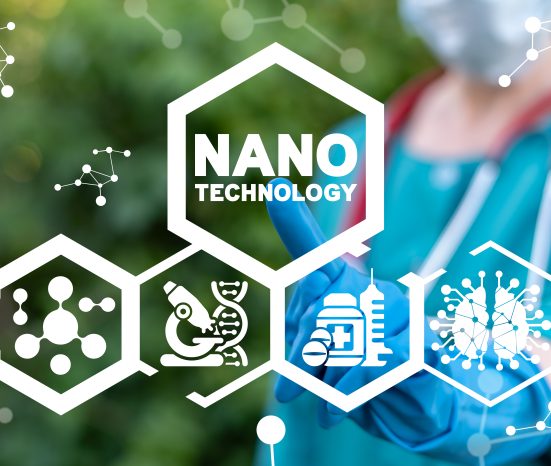Nanotechnology
What is Nanotechnology?
Nanotechnology refers to the manipulation of matter at the nanoscale, typically involving structures and devices with dimensions ranging from 1 to 100 nanometres (nm). One nm equals one-billionth of a metre. At this tiny scale, surface area and quantum mechanical effects become crucial in describing material properties. Here are some key points about nanotechnology:
- Definition: Nanotechnology involves designing and creating materials, devices, and systems by controlling atoms and molecules at the nanometre scale. It allows the development of nanomaterials that are no more than 100 nm thick and applies them across various industries, including healthcare, electronics, and sports.
- Importance: Nanomaterials exhibit unique properties due to their small size. Their large surface area-to-volume ratio enhances reactivity, strength, and conductivity.
Examples of Nanotechnology
- Electronics: Nanomaterials improve properties like conductivity and durability in smartphones, laptops, and televisions.
- Cosmetics: Some foundations and moisturizers contain nanoparticles to enhance texture and appearance.
- Sporting Goods: Nanomaterials in golf clubs and tennis rackets improve performance.
- Clothing: Outdoor gear and athletic wear use nanomaterials for durability and water resistance.
- Sunscreen: Nanoscale zinc oxide and titanium oxide strengthen sunscreens.
In summary, nanotechnology enables us to create novel materials and enhance existing products by harnessing the unique properties of nanoscale matter.
Nanotechnology in the Aerospace Industry
Nanotechnology in aerospace represents a pivotal shift in aircraft and spacecraft design, enhancing performance, strength, and efficiency through the manipulation of materials at the atomic and molecular levels. Here are some ways nanotechnology is applied in aerospace:
- Lightweight Materials: Nanomaterials improve properties like conductivity and durability in smartphones, laptops, and televisions.
- Improved Electronics: Some foundations and moisturizers contain nanoparticles to enhance texture and appearance.
- Sensors: Nanomaterials in golf clubs and tennis rackets improve performance.
In Situ Resource Utlization (ISRU)
Nanotechnology aids in harnessing local resources on celestial bodies. For example:
- Resource Assessment: Nanoscale sensors and sampling tools help analyze species and assess available resources.
- In Situ Manufacturing: Nanomaterials can be used for in-situ fabrication of parts.
- Energy Generation and Storage: Nanomaterial catalysts improve energy storage and conversion
In summary, nanotechnology contributes significantly to aerospace advancements by addressing challenges related to extreme environments, weight reduction, and efficient resource utilization.
Evolution of Nanotechnology

Nanotechnology has evolved significantly since its inception, characterized by advancements in manipulating materials at the nanoscale. Initially focused on fundamental research into atomic and molecular behaviors, nanotechnology has since expanded into diverse applications across fields such as medicine, electronics, and environmental science. The development of nanomaterials with unique properties has paved the way for innovations like targeted drug delivery systems, ultra-sensitive sensors, and high-efficiency energy storage devices. Ongoing research continues to push the boundaries of nanotechnology, promising further breakthroughs in both theoretical understanding and practical applications.
Aerospace & Nanotechnology in Future
The future synergy between aerospace and nanotechnology promises transformative advancements across various facets of space exploration and aviation. Nanotechnology holds potential for developing lightweight and robust materials that could revolutionize aircraft and spacecraft design, enhancing performance and fuel efficiency. Furthermore, nano-engineered sensors and coatings could improve aerospace equipment’s durability and functionality in extreme environments. Collaborative research efforts between aerospace engineers and nanotechnologists are poised to redefine the boundaries of exploration, making space missions safer, more efficient, and sustainable.

Frequently Asked Questions
Common questions and answers pertaining to nanotechnology, especially in regards to aviation.
How is nanotechnology used in aviation?
Nanotechnology is applied in aviation to develop lightweight, strong materials for aircraft structures, coatings for enhanced durability, and sensors for improved performance monitoring.
What are the benefits of using nanomaterials in aircraft construction?
Nanomaterials can significantly reduce weight, increase fuel efficiency, and improve overall aircraft performance and safety.
Are there any safety concerns regarding nanotechnology in aviation?
Safety concerns may include potential environmental and health impacts of nanomaterials during manufacturing and maintenance, requiring careful risk assessment and regulation.
Can nanotechnology improve aircraft maintenance and repair processes?
Yes, nanotechnology can enhance corrosion resistance, provide self-healing properties, and facilitate more precise maintenance through advanced diagnostic tools and materials.
How might nanotechnology contribute to future aviation sustainability?
Nanotechnology could enable the development of eco-friendly aircraft components, such as biofuels from nanocatalysts, reducing emissions and promoting sustainable aviation practices.
Video Explanation
The video below will provide more information as to how this technology works
Example Industry User

Lockheed Martin leverages nanotechnology to enhance its advanced defense and aerospace systems, focusing on developing materials and technologies with superior performance characteristics. By incorporating nanotechnology, Lockheed Martin aims to create stronger, lighter, and more resilient materials that improve the efficiency and capabilities of aircraft, spacecraft, and other defense equipment. Nanotechnology also enables innovations in sensors, coatings, and electronics, providing cutting-edge solutions for stealth, durability, and performance. This relationship underscores Lockheed Martin’s commitment to pioneering technologies that offer strategic advantages in defense and aerospace industries.
Further Resources
Below are some external links to further information on this technology.




